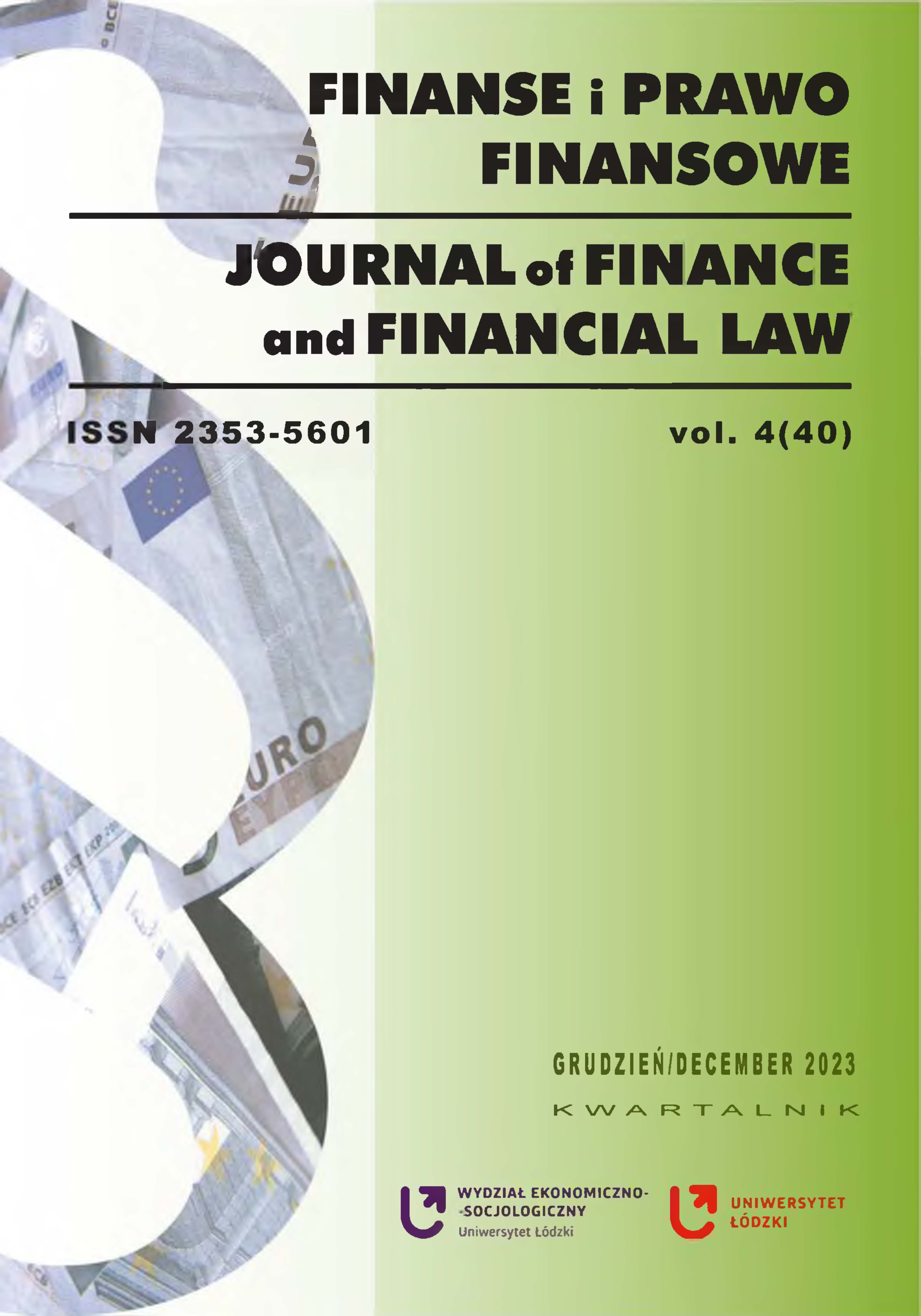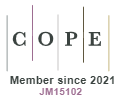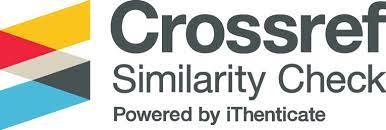The Market for Individual Retirement Accounts in Poland in the Context of the Implementation of Pan-European Personal Pension Product
DOI:
https://doi.org/10.18778/2391-6478.4.40.05Keywords:
voluntary pension products, retirement planning, old-age provisionAbstract
The aim of the article is to present the opinions of Individual Retirement Account (IRA) holders in Poland based on our own research in the context of the Pan-European Personal Pension Product (PEPP) implementation in Poland. The hypothesis of the article is as follows: IRA holders' satisfaction with the achieved rates of return is moderate, which makes it possible to improve this assessment in the case of the implemented PEPP. Moreover, the article presents the relationships between many parameters characterizing IRA and sociodemographic characteristics and users' satisfaction with IRA. The verification of the research hypothesis is based on empirical research conducted on a nationwide group of nearly 550 IRA holders in the CAWI online survey in September 2022. In addition, the article uses literature studies, legal acts and an analysis of market statistics in the field of voluntary forms of accumulating pension capital in Poland under 3rd pillar. The survey results indicate that there is moderate satisfaction with the financial results achieved by IRA (6,62/10 points), which translates into an advantage of critics over promoters and a negative NPS (Net Promoter Score) index of over 26. Respondents within the PEPP would like to invest in foreign and global assets, i.e. .ETFs, shares and global bonds. This may mean higher rates of return on PEPP compared to IRA in the future, which may translate into improved customer satisfaction and a better NPS ratio. It should be added that the research results have application significance because they were used when introducing the first PEPP to the Polish market under the name European Pension by the Slovak brokerage house Finax, which obtained a license from the Polish Financial Supervision Authority for this type of activity.
Downloads
References
Błaszczyk B. (2020), Filar kapitałowy w polskim systemie emerytalnym. Od OFE do PPK, Gospodarka Narodowa, The Polish Journal of Economics, nr 1.
Google Scholar
Czopik K., Szczepańska-Przekota A. (2022), Teoretyczne podstawy modeli emerytalnych i ich współczesne odmiany, Zeszyty Naukowe Wydziału Nauk Ekonomicznych Politechniki Koszalińskiej, nr 26, s. 87-98.
Google Scholar
Dybał M. (2008), Efektywność inwestycyjna funduszy emerytalnych, CeDeWu, Warszawa.
Google Scholar
Frasyniuk-Pietrzyk M., Walczak-Gańko M. (2016), Świadomość potrzeby planowania emerytalnego, Prace Naukowe Uniwersytetu Ekonomicznego we Wrocławiu, nr 437, s. 143-155.
Google Scholar
Gibbs N. M., Gibbs S. V. (2015), Misuse of ‘trend’ to describe ‘almost significant’ differences in anaesthesia research, BJA: British Journal of Anaesthesia, Vol. 115, Issue 3, https://doi.org/10.1093/bja/aev149
Google Scholar
DOI: https://doi.org/10.1093/bja/aev149
Jędrasik-Jankowska I. (2018), Pojęcia i konstrukcje prawne ubezpieczenia społecznego, Warszawa, rozdział XXI.
Google Scholar
Jedynak T. (2021), Uwarunkowania wykluczenia emerytalnego z dodatkowej części systemu emerytalnego w Polsce, Ekonomia - Wroclaw Economic Review, tom 27, nr 2, s. 9-25.
Google Scholar
DOI: https://doi.org/10.19195/2658-1310.27.2.1
KNF – Informacja o stanie rynku emerytalnego w Polsce na koniec 2021 r.
Google Scholar
Nowotarska-Romaniak J. (2011), Net Promoter Score w badaniach lojalności klientów firm ubezpieczeniowych, Ekonomiczne Problemy Usług, nr 72, s. 85-93.
Google Scholar
Olejnik I., Ratajczak J. (2017), Attitudes to Reverse Mortgages in Wielkopolska, Rozprawy Ubezpieczeniowe, nr 3(25), s. 79-86.
Google Scholar
Pritschet L., Powell D., Horne Z. (2016), Marginally Significant Effects as Evidence for Hypotheses: Changing Attitudes Over Four Decades, https://doi.org/10.1177/09567
Google Scholar
DOI: https://doi.org/10.1177/0956797616645672
Rutecka-Góra J., Kowalczyk-Rólczyńska P., Pieńkowska-Kamieniecka S. (2022), Efektywność inwestycyjna dodatkowych planów emerytalnych a czynniki makroekonomiczne, Praca i Zabezpieczenie Społeczne, nr 6, s. 21-30.
Google Scholar
DOI: https://doi.org/10.33226/0032-6186.2022.6.3
Rutecka-Góra J. (2016), Evolution of supplementary old-age pension systems in selected CEE countries, Journal of Management and Finance, 14(4), s. 149–162.
Google Scholar
DOI: https://doi.org/10.33119/ZiF.2016.14.4
Solarz M. (2019), Świadomość emerytalna jako warunek skutecznego zarządzania ryzykiem starości, Przedsiębiorczość i Zarządzanie, tom 20, s. 49-62.
Google Scholar
Szczepańska M. (2022), Dodatkowe formy oszczędzania na emeryturę w ramach III filaru w polskim systemie zabezpieczenia emerytalnego, Prawo Asekuracyjne, nr 1, s. 17-31, https://doi.org/10.5604/01.3001.0015.8053
Google Scholar
DOI: https://doi.org/10.5604/01.3001.0015.8053
Ustawa z dnia 7 lipca 2023 r. o ogólnoeuropejskim indywidualnym produkcie emerytalnym (Dz.U. 2023 poz. 1843)
Google Scholar
Waliszewski K., Banaś D. (2023), Implementacja Ogólnoeuropejskiego Indywidualnego Produktu Emerytalnego w Polsce – podejście regulacyjne i ekonomiczne, Praca i Zabezpieczenie Społeczne, https://www.pwe.com.pl/czasopisma/praca-i-zabezpieczenie-spoleczne/implementacja-ogolnoeuropejskiego-indywidualnego-produktu-emerytalnego-w-polsce-podejscie-regulacyjne-i-ekonomiczne,a1268440106 [dostęp: 15.04.2023].
Google Scholar
Wrzesiński P. (2021), Ogólnoeuropejski indywidualny produkt emerytalny – perspektywa ubezpieczeniowa, Prawo Asekuracyjne, nr 2, https://doi.org/10.5604/01.3001
Google Scholar
ZUS (2020), Jak zatroszczyć się o zabezpieczenie na starość osób o niskich dochodach?, www.zus.pl [dostęp: 26.04.2023].
Google Scholar
Downloads
Published
How to Cite
Issue
Section
License

This work is licensed under a Creative Commons Attribution-NonCommercial-NoDerivatives 4.0 International License.














